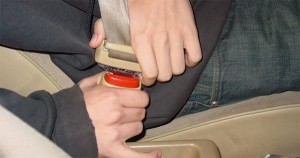 The car is a modern convenience that now borders on necessity. As our cities become more and more dependent on wheeled transportation, keeping our cars in functioning order is more important than ever. Operating a car is a complex process, but a few well-thought precautions can help make sure you get home safe.
The car is a modern convenience that now borders on necessity. As our cities become more and more dependent on wheeled transportation, keeping our cars in functioning order is more important than ever. Operating a car is a complex process, but a few well-thought precautions can help make sure you get home safe.
Inspect the Vehicle
It’s a good idea to take a quick look at the car’s exterior before you get going each time. Your inspection doesn’t need to be as thorough as a garage’s, of course; just walking the perimeter of the vehicle should suffice. Looks for dents and scratches that are new, see if your tires looks low, and make sure your windows and lights are clear of debris. This has a couple of advantages. First off, if you do notice a problem, you can try to find any evidence that your car has been tampered with to give the police. Second, you can prevent dangerous highway conditions by checking the lights and tires.
Buckle up for Safety
By now, most people have heard of the massive advantages seat belts offer in terms of accident survivability, yet some people still refuse to use them. Whether they do so out of the mistaken belief that they will escape the statistics or a misguided notion that other safety precautions are adequate, the fact is the numbers are against them. Seat belts save lives every day, and you should always fasten yours before your car starts moving, even if the trip is a local one.
Check Your Mirrors
A car’s mirrors are a wonderful tool for safety, but only if used properly. Mirrors let you see behind and to your sides with only a slight movement of your eyes or head, but if they are not calibrated to your height and head position, they will do you no good. Set your rearview mirror so you have a clear view of the area behind your car, and your side mirrors so they cover the lane directly to either side of you. When you are on the road, take periodic glances at the mirrors so your situational awareness stays engaged.
Check the Lights
When you turn your car on, the indicator lights will usually flip on as well. After a second or two, however, most of the lights should go out. If they don’t, then you might have a problem. Get in the habit of checking the lights so you are sure your car isn’t trying to warn you of a developing problem before you get on the road. It’s far better to notice a problem with engine heat or oil level before the car is moving than when it is barreling down the highway.
Your car can be dangerous, but it is also a great tool for improving your lifestyle and productivity. Powerful tools need care and thoughtful use. Pay attention to your safety and the safety of those around you, and you’ll be just fine.



![[Facebook]](https://www.fordlincolncharlotte.com/blogs/594/wp-content/plugins/bookmarkify/facebook.png)
![[LinkedIn]](https://www.fordlincolncharlotte.com/blogs/594/wp-content/plugins/bookmarkify/linkedin.png)
![[Twitter]](https://www.fordlincolncharlotte.com/blogs/594/wp-content/plugins/bookmarkify/twitter.png)
![[Yahoo!]](https://www.fordlincolncharlotte.com/blogs/594/wp-content/plugins/bookmarkify/yahoo.png)
![[Email]](https://www.fordlincolncharlotte.com/blogs/594/wp-content/plugins/bookmarkify/email.png)

